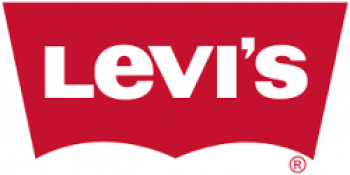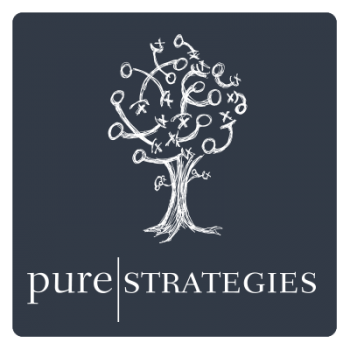Newsletter: March 11, 2023
Join BizNGO!
March 08, 2023
Newsletters
5 activities of BizNGO in 2023
Join BizNGO in 2023. Here’s what we are up to …
- Chemicals Management Work Group: engage in chemical footprinting—including definitions, metrics, best practices, and key performance indicators.
- DEI + EJ Work Group: address the disproportionate impacts of toxic exposures throughout the value chain.
- Hazard Assessment Work Group: address pain points in safer chemicals in products, including supply chain transparency and hazardous chemicals in recycled content.
- ASBN-BizNGO Chemicals Policy Work Group: inform policies and regulations on PFAS, cosmetic safety, transparency, circular economy, and more.
- Annual meeting: engage with peers and stakeholders on the latest trends in chemical footprinting and safer chemicals -- December 6-7, 2023 in Oakland!
See below for details, including presentations from the December 2022 BizNGO Annual Meeting, co-hosted by the Center for Environmental Health and Clean Production Action. To join BizNGO or any work group contact us at moreinfo [at] bizngo.org.
Chemicals Management Work Group
Why Join
Engage in chemical footprinting—including definitions, metrics, best practices, and key performance indicators. Additionally, the Chemicals Management Work Group creates resources that simplify and clarify leadership work in chemicals management.
Projects for 2023
- Update the Chemical Footprint Project (CFP) Chemicals of High Concern (CoHCs) Reference List.
- Craft recommendations for revising the CFP Survey.
- Engage in the development and promotion of the chemical footprint metric.
- Identify, develop, and disseminate best practices and key performance indicators (KPIs) in chemicals management.
Co-Chairs
- Cheri Peele, Toxic-Free Future
- Angela Pinilla and Mark Rossi, Clean Production Action
Highlights from 2022 BizNGO Annual Meeting
Setting Bold Goals for Chemical Footprint Reductions
Facilitated by Tim Greiner of Pure Strategies, our panel featured:
Highlights of the panel and small group discussions included:
- The target of zero chemicals of high concern (CoHCs) was generally agreed upon. Points of discussion in achieving that goal included: timeline; the need to recognize variations across industry sectors; and questions of how to measure and deal with chemicals lacking chemical hazard assessments (e.g., GreenScreen® Benchmark score).
- Need to integrate chemical footprint measurement into other standards.
- Need to educate investors about chemical footprints and how their reductions tie into other sustainability goals and corporate oversight.
- Need to create language and tools to better communicate chemical footprints and chemical hazards to lay audiences.
Defining Proactive Chemicals Management Leadership through Key Performance Indicators (KPIs)
Facilitated by Sally Edwards of the Lowell Center for Sustainable Production at the University Massachusetts Lowell, our panel featured:
Highlights of the panel and small group discussions included:
- Widespread support for current KPIs (as reflected in the questions) in the Chemical Footprint Project (CFP) Survey.
- Investors want to know how companies are mitigating their chemical risks. Thus they need greater transparency of what companies are doing on the journey to safer chemicals. For example, by publicly disclosing their responses to the CFP Survey.
- What’s missing from KPIs in the CFP Survey:
- Addressing environmental justice (EJ), worker rights, and impacts on communities adjacent to and downstream of manufacturing processes. Include EJ in corporate policies or require separate EJ policy.
- Link use of chemicals of high concern (CoHCs) to revenue. For example, percent of revenue from products containing CoHCs.
- Greater rewards for companies using safe alternatives. For example, reward companies who actively fund safer alternatives research.
- Chemical transparency to downstream users, particularly in articles, remains a challenge. Is there a role for CFP in incentivizing greater supply chain transparency? For example, rewarding participation in sector-specific initiatives that accelerate supply chain transparency.
Diversity, Equity, Inclusion + Environmental Justice Work Group
Why Join
Address the disproportionate impacts of toxic exposures throughout the value chain by creating frameworks businesses, governments, and NGOs can use to incorporate an environmental justice approach into their initiatives to enhance the health of people and the planet.
Projects for 2023
- Identify, develop, and disseminate best practices for addressing environmental justice and toxic chemicals in business.
- Engage with environmental justice and community led advocacy organizations.
Co-Chairs
- Rachelle Wenger, CommonSpirit Health
- Kayla Williams, Clean Production Action
Highlights from 2022 BizNGO Annual Meeting
Keynote & Panel: Integrating Environmental Justice into Business Policies & Practices
Facilitated by Tyra Johnson Hux of the Local Initiatives Support Corporation, our keynote speaker was:
- Rachelle Wenger, System Vice President, Public Policy and Advocacy Engagement of CommonSpirit Health
Ms. Wenger was joined by panelists:
Highlights of the keynote, panel, and small group discussions included:
- Using data to better understand causes of health and social impacts/discrimination
- Partner with others to expand our circles and grow common ground
- Over 150 bills introduced in 2021 related to environmental justice regulation
- Seek out community engagement at the beginning of the process
Hazard Assessment Work Group
Why Join
Address pain points and create solutions to refine the science and practice of hazard assessment in decision-making.
Co-Chairs
- Nicole Acevedo, Elavo Mundi Solutions
- Cory Robertson, HP Inc.
- Antonio Quiñones-Rivera, GOJO Industries
- Shari Franjevic, Agnes Cheng and Mark Rossi, Clean Production Action
Projects for 2023
- Discuss chemical ingredient supply chain transparency needs, challenges, and solutions and summarize and disseminate lessons learned.
- Engage in creating collective knowledge on hazardous chemicals and circularity with a focus on the challenges and solutions to hazardous chemicals in recycled content.
Highlights from 2022 BizNGO Annual Meeting
Lessons Learned from Identifying Safer Solutions to PFAS in Firefighting Foam
Facilitated by Shari Franjevic of Clean Production Action, our panel featured:
Highlights of the panel and small group discussions included:
- The critical role of policy mandates and market/consumer pressure to shift a market towards safer alternatives.
- The need for standards to define safer products and drive innovation.
- The importance of having competitive, tested safer alternatives in the marketplace.
- The need for direct experience and case studies to answer the question, “will the alternative work in my situation?”, and willingness to consider performance that is fit for purpose (i.e., sufficient but not overdesigned).
- The need to address pragmatic challenges in transitioning to a new technology such as mistrust of the performance of alternatives and the cost of the transition, e.g., purchasing new equipment and cleaning out contaminated equipment.
- The importance of supply chain transparency and analytical test methods to identify products containing chemicals being targeted for replacement and to verify use of safer alternatives.
Testing PFAS: Defining Pragmatic Test Methods and Thresholds for Product Testing Facilitated by Margaret Whittaker of ToxServices, our panel featured:
Highlights of the panel and small group discussions included:
- The role of regulations in driving development of standardized test methods, and how the current uncertainty around compliance requirements for PFAS in products creates an abundance of options and many non-standardized test methods for stakeholders to navigate.
- The importance of clarifying the questions you trying to answer and the PFAS chemicals of interest to you to select the most appropriate analytical technique and test method.
- The difficulty of differentiating between intentionally added and compounds and unintentional compounds using analytical testing.
- Some analytical techniques will measure polymeric and non-polymeric PFAS while others will only measure non-polymeric PFAS. This is important for stakeholders focused on addressing the life cycle and environmental justice concerns of production and disposal of polymeric PFAS.
ASBN-BizNGO Chemicals Policy Work Group
Why Join
Learn the latest in chemicals policy initiatives and inform the direction of legislative and regulatory decisions.
Projects for 2023
- UN Strategic Approach to International Chemicals Management (SAICM) “Beyond 2020” revisions
- Inflation Reduction Act implementation and opportunities for addressing clean production and environmental justice (EJ)
- Intersection of hazardous chemicals with circularity, recycled materials, and plastics, including extended producer responsibility (EPR) legislation
- PFAS restrictions and safer alternatives
- Federal Trade Commission Green Guide revisions
- Cosmetics legislation
- Farm Bill renewal and pesticide restrictions
- Safer alternatives initiatives
Co-Chairs
- David Levine, American Sustainable Business Network
- Mark Rossi, Clean Production Action
Highlights from 2022 BizNGO Annual Meeting
Regulations to Eliminate PFAS in the EU and US
Facilitated by Arthur Bowman of the Center for Environmental Health, our panel featured:
Highlights of the panel and small group discussions included:
- States driving restrictions in the US
- Typically takes only one state to shift market because it’s not practical for manufacturers to sell different products by state.
- 12 states have preventative upstream PFAS policies and around 40 have some aspect of PFAS policy.
- PFAS should be out of food packaging by 2023.
- Exit of PFAS from textile articles by 2025 with California legislation a major driver.
- Likely new restrictions on PFAS in ski wax, cleaning agents, and floor polishes.
- Maine: mandatory disclosure reporting requirements for PFAS will be required in 2023; and presumptive ban by 2030 for non-essential uses (see “essentiality” notes below).
- EU Regulations
- PFAS – reactionary regulations, “putting out fires” and stretching existing frameworks of regulation (like SVHC, REACH).
- Five EU countries (Germany, Denmark, Netherlands, Sweden, and Norway) are proposing restriction to entire class of PFAS under the use case of “non-essential uses” under REACH: will be presented in Q1 of 2023 and likely to be scheduled for adoption in 2025-2026.
- Remaining questions for EU debate: what uses are “essential,” what are not substitutable, what are remaining use classes?
- Currently a call for evidence for PFAS use classes: over 100 end use categories; want more specific and well-defined categories to avoid abuses of category exemptions.
- Persistent, Mobile, and Toxic (PMT) is not a hazard classification in REACH yet – until that happens EU is unable to have a disclosure requirement.
- Essentiality:
- Maine has exemptions for “essential AND no sufficient alternatives”
- EU essentiality determined by whether: the chemical is necessary for health and safety, critical for society; and alternatives are available and are satisfactory.
- EU can offer a derogation by sector (meaning the rule/restriction does not apply to that sector), which then expires over time. The chemical must be continually evaluated for “essentiality”.
Thank you to our sponsors










